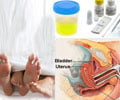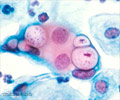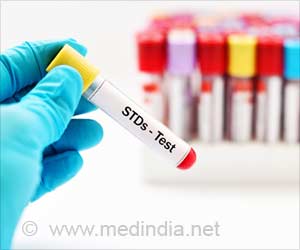A new assay for rapid and sensitive detection of Chlamydia trachomatis, the most common sexually transmitted infection (STI) in humans was developed by researchers.

The assay uses recombinase polymerase amplification (RPA), a nucleic acid amplification technique (NAAT), to detect C. trachomatis directly from urine samples. Because the assay's novel approach does not require the purification of total DNA from the urine sample, the need for specialized equipment is eliminated. The procedure is significantly less laborious, less time-consuming, and consequently less expensive. It is relatively simple to perform and could therefore be applied in numerous POC settings.
"The assay enables highly specific C. trachomatis detection with sensitivity levels significantly improved compared to currently available C. trachomatis POC assays," says Ülo Langel, PhD, Professor of Molecular Biotechnology, University of Tartu, Estonia, and Professor of Neurochemistry, Stockholm University, Sweden.
Existing polymerase chain reaction (PCR)-based techniques for testing C. trachomatis are widely applied but are only suitable for use in hospitals with trained staff and expensive machinery. Studies have shown that up to 50% of patients never return to get the diagnostic result or required treatment.
Although several rapid-diagnosis POC tests have already been developed, none offer a comparable sensitivity to hospital-based techniques. Recent independent studies have shown that currently available POC tests have a sensitivity of just 10% to 40%. Initial analysis of the new assay's performance indicated a specificity of 100% and a sensitivity of 83%, evidence of its potential reliability.
"The alarmingly poor performance of the available POC tests for C. trachomatis has limited their wider use, and there is a clear requirement for more sensitive and cost-effective diagnostic platforms. Hence, the need for an applicable on-site test that offers reasonably sensitive detection," concludes Prof. Langel.
C. trachomatis cells contain plasmids (small DNA molecules that are separate from chromosomal DNA) that have a number of coding sequences. For identification and amplification by RPA, researchers selected a gene fragment within a gene (CDS2) that was conserved across sexually transmitted C. trachomatis strains. The assay does not require the purification of total DNA from the urine sample. Heating the sample for five minutes at 90°C is enough to release a sufficient amount of the amplification target to determine whether the pathogen is present. Urine contains polymerase chain reaction (PCR) inhibitors, but up to 5 μl of urine can be added without affecting sensitivity of the RPA, whereas the addition of 10 μl affects amplification efficiency significantly.
The assay was tested on urine samples from 70 patients (51 females and 19 males) attending a sexual health clinic in Estonia. The samples were tested in parallel using RPA and Roche Cobas Amplicor C. trachomatis assays.
Fifty-eight samples tested negative in both assays. As no false negatives were detected, the clinical specificity of the C. trachomatis RPA assay can be estimated at 100%.
Twelve of the samples tested as positive using the Roche assay. Of these, 10 tested positive and two tested negative in the RPA reaction. Based on these results, the clinical sensitivity of the RPA assay can be estimated at 83%.
Of the 12 patients who tested positive, three complained of symptoms. The other nine patients were asymptomatic. Of the 58 C. trachomatis-negative patients, 15 (26%) complained of symptoms that could be associated with C. trachomatis infection. One of these tested positive for N. gonorrhoeae and M. genitalium. Others were diagnosed with bladder inflammation (two patients), bacterial vaginosis (five patients), yeast infection (four patients), or abdominal pain of non-gynecological origins (three patients).
Source-Eurekalert
 MEDINDIA
MEDINDIA




 Email
Email








